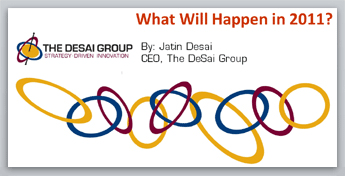Browse by Tag
- "Real" Innovation (2)
- Alignment (6)
- Business Innovation (9)
- Business Plan (2)
- Business Plans (1)
- Creativity (24)
- Critical Success Factors (4)
- Entrepreneurship (9)
- Global Competiveness (4)
- Human Side (11)
- India (1)
- Innovation (4)
- Innovation Consulting (18)
- Innovation Killers (3)
- Innovation Management (18)
- Innovation Tools (17)
- Innovation Training (24)
- Innovations (7)
- Inventions (16)
- IT Innovation (1)
- Leaders (5)
- Leadership (20)
- Leadership Development (13)
- Organizational Leadership (2)
- Organizational Strategy (20)
- Personal Values (6)
- Prediction (5)
- Strategic Innovation (38)
- strategic planning process (4)
- Strategy (3)
- Training (1)
- Vision (5)
- Weekly Dose (8)
Posts by Month
- 2014
- 2013
- 2012
- 2011
- 2010
- 2009
- 2008
- 2006
6 Components to Building Innovation Momentum
Our research and experience has led us to identify six components of building momentum and change to help you accelerate your innovation journey and lift off.
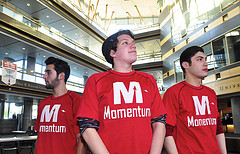
- Develop your innovation story. Develop a compelling case for innovation, what innovation is, and why the company is pursuing the innovation journey now. Include how it will benefit everyone.
- Evoke change leadership. No one likes change. During the uncertainties of a change process, people don't hang onto concepts, they hang onto people. Create a sense of urgency and build awareness and excitement about innovation for your key sponsors and change agents.
- Identify innovation leaders and best talent. Identify the natural intrapreneurs, innovation champions, and innovation igniters along with your key innovation leaders, advisors, and mentors. This talent pool will help you build the required innovation capability.
- Communicate, communicate, and communicate. Go for fast and small wins and tell everyone about it. Collect momentum data showing progress, and implement and integrate a solid public relations strategy using any and all resources at your disposal.
- Build awareness--educate everyone. In many ways an innovation change initiative begins and ends with education. It is the primary method of advancing and improving organizational knowledge and acceleration for desired changes in the hearts and minds of everyone involved.
- Protect the momentum. Vigilantly protect innovation principles. Many will want to go back to status quo and forget the agreements, processes, and principles in the playbook. Every small win is a huge step toward the future and part of the foundation-building process. Protect the foundation.
The Takeaway
Innovation momentum is created, not decreed by senior management. Use your momentum to establish your innovation objectives and goal.
Over to you. Please comment below.
- What steps would you add to the list?
- How do you motivate your innovators?
- Please share an anecdote about innovation momentum.
15 Components of Innovation Culture
Our insight, at The DeSai Group, from working with global customers since 1983 is that leadership readiness is the most essential factor for success. Leaders may want innovation, but it is entirely possible that the midlevel managers are not ready, meaning they have no time and no resources and lack the mind-set, motivation, and skills. It is also possible that the current organizational structures are too bureaucratic to welcome innovation thinking.
Let's look at the 15 factors in the categories of Alignment, Insights and Mobilization
that control innovation readiness and improve innovation propensity at your company.
Alignment
Five alignment factors are related to a business's ability to recognize, specify, clarify and commit to the purpose of innovation and help achieve predefined business value-your target destination. There is no need to waste time and money on innovation unless it is critically linked to the business strategy.
Alignment is about strategically sponsoring, engaging, monitoring, and supporting all innovation activities at every level of the business structure. If alignment is properly executed and adjusted as the organization matures, the result will be a climate and culture of innovation for long-term sustainable business growth.
| Alignment Success Factors | Definition |
| Innovation Mandate | At the top, innovation is seen as critical to the future of our organization. |
| Leader readiness | Leaders are prepared to guide the organization's innovation efforts. |
| Employee engagement | Individuals throughout the organization are motivated to contribute to innovation. |
| Innovation support | Organization has effective systems and processes to support innovation. |
| Systematic approach | There is a clear framework, common language, along with a systematic and well-understood approach to innovation. |
What are the signs of an aligned organization for innovation? When alignment is present, you will see focus and collaboration at the right levels for the purpose of achieving organizational and individual goals for both the business leaders and for individuals. True alignment will show up in the form of employees' desire to engage at work and be effective contributors to the organization, continually looking for new ways to support the overall vision, mission, and purpose of the organization as a whole.
Alignment means that each business unit, department, team, and individual sees and understands its role and how it contributes to the overall innovation mandate of the organization. It gives them confidence that their work is valuable.

Insights
Insights reflect the importance of discovering new ideas-with art and science rather than as matter of luck. It begins with the recognition that information from many sources is essential to developing unique insights that will allow your business to achieve strategic targets.
To develop deep insights about what is possible, you must involve people from all levels of the organization, including partners, suppliers, customers, and regulators. The larger the field of information and ideas, the more dramatic, sustainable, and unique will be your pool of insights. Here we capture a collection of ideas and knowledge, connected or not to each other, for potential exploitation.
Once captured, the ideas must be organized and easily shared with others so they can be enhanced; the result becomes your idea bank. You need a disciplined process to keep the idea bank alive or, like anything else, the ideas will quickly die due to inertia.
| Insights Success Factors | Definition |
| Diverse perspectives | We incorporate a wide range of perspectives in the idea- generation process. |
| External orientation | We actively engage with the external environment. |
| Climate/Culture | Our organizational climate and culture support the generation of ideas/insights. |
| Idea flow | We have strong flow of creative ideas. |
|
Idea selection |
We select the best ideas from those that are generated on a timely basis. |
How does a company develop this competency for deep insights? In most organizations, to gain insight into projects, market positioning, and corporate performance, they develop and study performance charts, two-by-two matrices, and Balanced Scorecards, respectively. Looking at data in such a way, we are able to develop certain forms of business insights.
Similarly, innovation insight depends on finding (sometimes through visualization and highly diverse group exercises) new knowledge that leads to practical ideas for consideration. When executed well, insights enable creation of innovation platforms (a plethora of ideas to pursue a large multiyear business opportunity) and fresh ideas. This helps managers quickly make investment decisions to accelerate new and novel discoveries.
What is required for an idea pipeline to get fatter and mightier? The most important is to establish climate of trust and openness that support the creative process. You will also need tools for individuals and teams to find incremental and breakthrough ideas.
Mobilization
The focus here is strictly on innovation execution. Our data show that most organizations are weakest in this area. Mobilization reflects the reality that even with strong alignment and a good flow of insights, innovation is only valuable when it is translated into results-that is, executed. The organization with the best idea is not always the winner. Rather, the organization with the ability to execute the best idea is the winner. Especially in today's competitive and fast-paced environment where maturation from unique idea to commodity is very swift, execution in the early stages of innovation is critical for success.
| Mobilization Success Factors | Definition |
| Resources | The organization allocates sufficient resources to innovation. |
| Governance | There are effective governance structures and processes for innovation. |
| Portfolio | Through a structured process, the company effectively manages a portfolio of innovations selected for implementation. |
| Change management | Leaders create the adjustments required to ensure all innovations achieve full realization. |
| Execution | The company has a clear process for successfully bringing projects through the pipeline to achieve positive results. |
Mobilizing also means you must capture the maximum value of an innovation before it is duplicated, continually improving that product of service to stay ahead of the competition. Effective mobilization calls for sufficient resources; quick and effective decisions; clear thinking about the human impact of new approaches; and continuous learning about how to translate innovations into reality faster and successfully over time.
In summary, mobilization is a set of processes, methods, tools, and structures that will allow employees and managers to operationalize ideas for implementation and venturing in an informed way to achieve targeted business outcomes.
Alignment + Insights + Mobilization = Success
Alignment, insights, and mobilization are all happening at the same time. All three play critical roles in the success of innovation and therefore, the long-term sustainability of your organization. To be successful, you must manage each of them and the trade-offs between them. An idea that has great merit but would struggle to be mobilized in your organization may not be as valuable as an idea with less merit that can quickly be tested and mobilized. A fantastic idea that would be great for your consumer but does not align with your organizational purpose will struggle to receive funding and support over the long term. A great idea for the market but without strong leadership alignment will stay dormant.
The Takeaway
As your organization builds the innovation muscle and the innovation engine continues to grow, you will need to adjust the integration points as a part of the overall business planning conversations and activities at the top.
Your turn. Please comment below.
- Do you feel that Alignment, Insights and Mobilizing should receive equal weight in the process?
- What have you done to commercialize your idea pipeline?
- Which of the 15 factors do you find most important?
You Can Build Your Own Innovation Engine
Yes, You Can Build Your Own Innovation Engine
Jatin Desai was interviewed for the Propelling Marketing Ideas blog about different aspects of Innovation. He answers these questions.
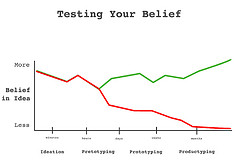
1. What is innovation?
2. Can innovation be measured? If so, how?
3. Besides product innovation, where else can a company innovate?
4. How does a company link innovation to their current business strategy?
5. How can a company innovate together with their customers?
Click here to read the interview.
8 Innovation Culture Books Worth Reading
I have spent most of my career involved in the Innovation arena. For long-term sustainable and continuous growth, a company must build a climate and culture of innovation. The recommended books in this category covers topics such as the role of leaders, how to design organizational structures and inspire teams to reach for the very best solutions.
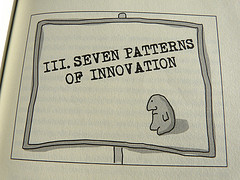
 Managing Innovation, Design and Creativity by Bettina Von Stamm
Managing Innovation, Design and Creativity by Bettina Von Stamm
Innovation is the major driving force in organizations today. With the rise of truly global markets and the intensifying competition for customers, employees and other critical resources, the ability to continuously develop successful innovative products, services, processes and strategies is essential. While creativity is the starting point for any kind of innovation, design is the process through which a creative idea or concept is translated into reality. Managing Innovation, Design and Creativity, 2nd Edition brings these three strands together in a discussion built around a collection of up-to-date case studies.
 Positive Turbulence: Developing Climates for Creativity, Innovation, and Renewal (J-B CCL (Center for Creative Leadership)) by Stanley S. Gryskiewicz)
Positive Turbulence: Developing Climates for Creativity, Innovation, and Renewal (J-B CCL (Center for Creative Leadership)) by Stanley S. Gryskiewicz)
Can your company manage even encourage turbulence in ways that actually strengthen its competitive stance? Absolutely. In this work, top organizational psychologist Stanley Gryskiewicz argues that challenges to the status quo can be catalysts for creativity, innovation, and renewal and shows leaders how they can keep their company on the competitive edge by embracing a process he calls Positive Turbulence. Developed through the author's work with many of the world's leading companies over the course of thirty years, Positive Turbulence delivers proven methods for creating an organization that continuously renews itself through the committed pursuit of new ideas, products, and processes.
 Closing the Innovation Gap: Reigniting the Spark of Creativity in a Global Economy by Judy Estrin
Closing the Innovation Gap: Reigniting the Spark of Creativity in a Global Economy by Judy Estrin
Named one of the "Best Books on Innovation, 2008" by BusinessWeek magazine
Does innovation come about by luck or hard work? Is it a flash of inspiration or the result of careful management? Are innovators born or taught? In Closing the Innovation Gap, Judith Estrin provides the answers to these and other questions critical to our future. A technology pioneer and business leader, Estrin describes what will be required to reignite the spark of innovation in business, education, and government ensuring our long-term success in the global economy.
Innovation does not occur in a vacuum. It grows from the interplay of three drivers of creative change research, development, and application. Estrin calls this dynamic the "Innovation Ecosystem," explaining how these communities work together to create sustainable innovation.
 The Elegant Solution: Toyota's Formula for Mastering Innovation by Matthew E. May and Kevin Roberts
The Elegant Solution: Toyota's Formula for Mastering Innovation by Matthew E. May and Kevin Roberts
One million. That's how many new ideas the Toyota organization receives from its employees every year. These ideas come from every level of the organization from the factory floors to the corporate suites. And organizations all over the world want to learn how they do it. Now Matthew May, Senior Advisor to the University of Toyota, reveals how any company can create an environment of every day innovation and achieve the elegant solutions found only on the far side of complexity. A tactical guide for team-based innovation, THE ELEGANT SOLUTION delivers the formula to the three principles and ten practices that drive business creativity. Innovation isn't just about technology it's about value, opportunity and impact. When a company embeds a real discipline around the pursuit of perfection, the sky is the limit. Dozens of case studies (from Toyota and other companies) illustrate the power and universality of these concepts; a unique 'clamshell strategy' prepares managers to ensure organizational success. At once a thought-shaper, a playmaker, and a taskmaster, THE ELEGANT SOLUTION is a practical field manual for everyone in corporate life.
 Swarm Creativity: Competitive Advantage through Collaborative Innovation Networks by Peter A. Gloor
Swarm Creativity: Competitive Advantage through Collaborative Innovation Networks by Peter A. Gloor
Swarm Creativity introduces a powerful new concept-Collaborative Innovation Networks, or COINs. Its aim is to make the concept of COINs as ubiquitous among business managers as any methodology to enhance quality and competitive advantage. The difference though is that COINs are nothing like other methodologies. A COIN is a cyber-team of self-motivated people with a collective vision, enabled by technology to collaborate in achieving a common goal n innovation-by sharing ideas, information, and work. It is no exaggeration to state that COINs are the most productive engines of innovation ever. COINs have been around for hundreds of years. Many of us have already been a part of one without knowing it. What makes COINs so relevant today, though is that the concept has reached its tipping point-thanks to the Internet and the World Wide Web. This book explores why COINS are so important to business success in the new century. It explains the traits that characterize COIN members and COIN behavior. It makes the case for why businesses ought to be rushing to uncover their COINs and nurture them, and provides tools for building organizations that are more creative, productive and efficient by applying principles of creative collaboration, knowledge sharing and social networking. Through real-life examples in several business sectors, the book shows how to leverage COINs to develop successful products in R & D, grow better customer relationships, establish better project management, and build higher-performing teams. In short, this book answers four key questions: Why are COINs better at innovation? What are the key elements of COINs? Who are the people that participate in COINs and how do they become members? And how does an organization transform itself into a Collaborative Innovation Network?
 Leadership for Innovation: How to Organize Team Creativity and Harvest Ideas by John Eric Adair
Leadership for Innovation: How to Organize Team Creativity and Harvest Ideas by John Eric Adair
New ideas and new ways of doing things are one of the main ingredients in sustained business success, but how does one create the right conditions for innovation?
Leadership for Innovation will help readers create an innovative climate that encourages the development of new products and services. Drawing upon real-life examples including Google, Honda and 3M, John Adair sets out practical ways for bringing about change in organizations. As well as identifying the characteristics of an innovative organization, he discusses key topics such as organizing for team creativity; motivating creative people, how to build on ideas and how to be a creative leader and team member.
Leadership for Innovation shows how to inspire teams to go one step further and generate the kind of ideas that are the foundations of future success.
 The Leader's Guide to Lateral Thinking Skills: Unlocking the Creativity and Innovation in You and Your Team by Paul Sloane
The Leader's Guide to Lateral Thinking Skills: Unlocking the Creativity and Innovation in You and Your Team by Paul Sloane
In this lively, energetic guide to leadership, highly acclaimed author, trainer and presenter Paul Sloane shares dynamic techniques that are sure to unleash creative energy and lateral thinking. Packed with real-life examples, practical methods and lateral thinking exercises, the book encourages you to question your assumptions and develop new ideas with a variety of techniques. Lateral thinking puzzles at the end of each chapter illustrate the importance of thinking outside the box.
 Giant Steps in Management: Innovations that change the way you work by Julian
Giant Steps in Management: Innovations that change the way you work by Julian
Birkinshaw and Michael J. Mol
Succinctly but completely describing 50 of the most important management innovations in the past 150 years, Mol and Birkinshaw educate us on where and how managerial innovations arise. An amazing overview of the management practice landscape, Giant Steps in Management provides invaluable insights for organizations seeking better performance. Jeffrey Pfeffer, Professor, Graduate School of Business, Stanford University Never has it been more important for managers to innovate the way they manage. As this book so powerfully shows management innovation advances in how we manage is a secret weapon in the search for competitive advantage. With a fantastic compendium of the 50 most crucial management innovations this book will surprise, inform and inspire any manager who believes that they need to innovate the way they manage. Lynda Gratton, Professor of Management Practice, London Business School Author of Hot Spots; why some teams, workplaces and organisations buzz with energy and other's don't. "This book might be called 'Everything you wanted to know about management, but were afraid to ask'. It's an invaluable quick guide to the entire arsenal of techniques and models, and I recommend it to anyone who takes the job of management seriously. It is typical of the authors work, in that it is clear, crisp, and useful." Tim Brooks, Managing Director, Guardian News & Media Limited INNOVATION IS AT THE HEART OF GREAT MANAGEMENT How do you manage? What skills, ideas, tools and techniques do you use? Have you always used them? Think about it: how we manage organizations and ourselves is in a constant state of evolution. Nothing about the way you work today is forever. Managers are always trying new things, different approaches. There are management innovations underway all the time in large organizations. Many fail. Some work. A few make history. The most valuable ones are picked up and absorbed across entire industries and countries. These are the ones this book will tell you about. Giant Steps in Management presents a thought provoking selection of the 50 most important management innovations of the last 150 years and describes the impact they have on management today. Some of the innovations will be familiar to you; others will be new, different, surprising. Together, they form a fascinating compendium of the ideas, techniques and practices that have rocked the world of management. If you want to be on the right side of innovation, keep this book to hand.
The Takeaway
Growing your climate and culture or innovation can be jumpstarted by reading the books featured above. The authors explore and outline many of the areas necessary to succeed.
Your turn. Tell me what you think. Please comment below.
- What other books would you recommend be included on the list?
- What is your favorite book on the topic of Innovation Culture?
- Who is your favorite Innovation writer?
Microsoft Innovative - YES according to AD in WSJ
Microsoft is famous for its back story of a couple of nerds who changed personal computing for the entire world. They went from a few thousand dollars in revenue to$70 billion in revenue each year. They must have been innovative to accomplish such a feat and have $77 billion in the bank. They just spent $7 billion of that hard earned cash to buy Nokia's Devices & Services business.
READ MY LIPS - WE ARE INNOVATIVE
Then, why did they have to point out not once, but twice about innovation in their full page ad on the back page of Section A in the Wall Street Journal? Here are the two quotes with emphasis and commentary added by me.
"By bringing together these great teams together, Microsoft will be able to deliver more choices and faster innovation to consumers in phones and smart devices of all kinds"
I thought a couple of years ago that Microsoft gave billions of dollars to Nokia and its CEO Stephen Elop (a former Microsoft executive) to accomplish the task already. Microsoft and Nokia were already joined at the hip as partners when Nokia gave up its own operating system in favor of Windows.
Staples has the "Easy Button." Perhaps, Mr. Elop has the "Innovation Button."
"Together, we will create more unified development, manufacturing, and marketing efforts to bring innovation to market with greater efficiency and speed."
The market did not think so, and erased 4.6% of Microsoft's share price after the announcement. That decline in share price pretty much wiped out the nice bump in Microsoft shares after CEO Steve Ballmer indicated he would retire within 12 months.
A THIRD EXAMPLE OF PUTTING YOUR MONEY WHERE YOUR MOUTH IS
Ballmer went on to say in a Wall Street Journal story on the same day,"For us to really fulfill the vision for what we can do for our customers, we have evolved our thinking."
Very recently Ballmer announced the "devices and services" approach at Microsoft after a major reorganization of the 100,000 person company (now 132,000 after Nokia acquisition). Sounds like he is going all in for devices. Other than the X Box gaming device, Microsoft does not have a successful record creating hardware. See Surface Tablet and Microsoft's recent $900 million write off for unsold inventory.
The Takeaway
You need an Innovation Engine to help create an ecosystem of innovation. You cannot decree it, you must work hard to create it.
Your turn. Tell me what you think. Please comment below.
- Does your business have a culture and climate of innovation?
- What is the most innovative new product or service your company has created in the last 5 years?
- Do you feel that Microsoft and Nokia can out innovate Google's Android platform and Apple's iPhone platform?
Role of HR in Innovation
Innovation is the catch word for our generation. Everywhere we look at, we find innovation. There was a time in history when invention was innovation. At the brink of inventing all, innovation is invention. The bottle of beverage is redefining its shape. Every communication device is undergoing metamorphosis. 2G to 3G, rectangular to modular technologies, the world is experiencing change through break neck innovation.
We wonder about the soul of innovation! Is it a collective mind frame which innovates? Do innovation leads to more innovation? Or there is an innovator behind every innovation?

Innovation is definitely a social mind frame. If not initiated participated by all. Whenever something new hits the town and if dubbed happening by a group of people, like a shoal of fish, we run after it to part of the experience. That means innovation is started by an innovator and followed by the masses. Innovation leads to further innovation! That is true but there has to be some innovator to start this chain reaction. Thus innovation is all about the innovator.
Innovator is no one but someone among you and me. It is the human brain which innovates. Finding such brains is the real job of our HR Dept. A successful HR professional is always an innovator who identifies the resource who can do trendsetting innovation.
Unfortunately the industry is swarmed by unsuccessful HR techniques which fail to identify the real innovator. What is the relevance of totemistic queries like, “How experienced you are? And tell us about yourself? How about your achievements and breakthroughs? Who are your clients?” And all statistical queries far removed from finding the real innovator with innovation mind. We are not proposing these queries are irrelevant at the time of selecting candidates however we are questioning its relevance in terms of the context of innovation.
An ideal HR professional shouldn’t be task master or recruitment software. Beyond the plastic smile he/she should have a sensibility to understand the processes one practice to understand and implement business techniques. One should delve in detail to understand the outlook of an interviewee when it comes to innovation.
However no HR is born with these skills. An integrated HR innovation package can help them tremendously in recruiting innovative personnel in the managerial wire frame of an organization.
Innovation Q&A with Rob Berman
My friend Rob Berman had lots of questions about Innovation. He discussed these questions with me and had put together this discussion in his blog.
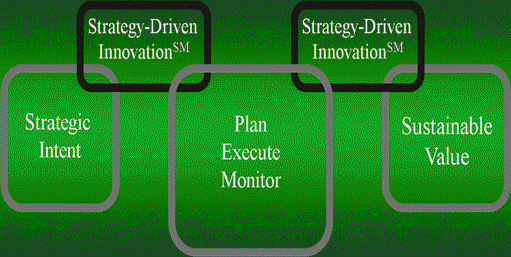
For all questions and answers of this discussion please visit Rob Berman's blog.
-Jatin Desai
How Innovative is your Organization?
You must be having certain parameters or yardsticks to judge the performance of your organization and exactly calculate the return on investment (ROI) vis-à-vis the planning, the performance and the potential. Despite all the available mechanisms of analysis, most leaders fail to understand the immeasurable gap between speculations and reality. The root cause of this immeasurable gap can certainly be tracked down to a few intangible factors. Primary among them is the capacity to innovate for a particular brand, organization or a corporate entity.
Innovation Obstacles
The major problem faced by an organization is the absence of a clear directive or formula to innovate. The work force, which is a major decider of innovation, largely works as a cog in the machine rather than a radical unit intelligent enough to innovate as hierarchical processes are better preferred by a linear human resource.
Another area which makes innovation a difficult process to be imbibed by your workforce is lack of liberty to express in a highly structured system. Whenever there is lack of liberty at an individual level, an organization fails to innovate on the whole. More structured-driven the culture, harder it is to embrace innovation; which by its nature, is somewhat unstructured.
Organizational culture is a result of inherited and tolerated past behaviors of the staff; especially the leaders at the top. Organization suffers from lack of innovation due to contemporary business practices and the nearby environment it operates in. Thus, innovation as a process should begin at the level of an individual with full support of the leaders. This can lend a character to an organization where performance, profit and potential grow manifold by significant innovation on intangible, impromptu research, and management decisions.
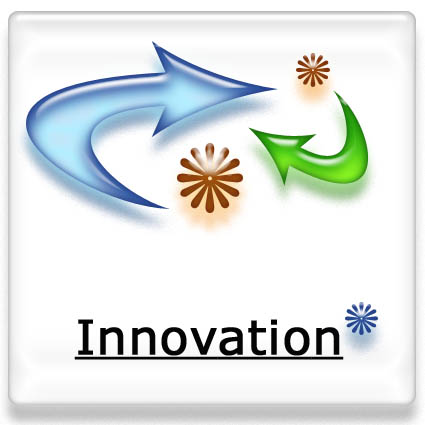
How ready is the culture for innovation?
How adept your workforce is with a dynamic knowledge system or how porous they are with circumstance fluctuation are simple questions which help you to approximately understand how innovative your organization is. However, to ensure that your organization is ready for such innovation trials you need to first make sure that your organization is innovation-ready.
At The DeSai Group, our innovation consulting processes are deliberate and drastic. They are designed to be transformative in nature. We believe in a sustained innovation strategy instead of piecemeal innovation. This means that our consulting techniques rely heavily on a dramatic change to completely undermine forces of resistance and new growth opportunities. As necessity is the mother of invention, we facilitate an environment in your organization where necessity is induced to alter psychological performance and create a climate of innovation. The process makes your workforce rehearse find measures of self-innovation. This means there are real entrepreneurs working on their passions in an environment that promotes experimentation, risk-taking, and future thinking.
The right brand image within insiders of an organization is a necessary precondition for any kind of innovation. If a nagging employee has a negative attitude toward the organization’s optimism the result is not only affecting the performance of the concerned individual but the overall environment as well. Such individuals can be motivated through vigorous team-building and venturing skills.
The process of innovation is largely a psycho-social process wherein knowledge transfer and experiential methods are largely employed to achieve the goal. We, here at The DeSai Group, clinically approach the intangibility quotient of innovation through hard-core rational, analytical science we call “Innovation Execution Methodology”, while keeping in mind that innovation is also very much a form of art and it is the artistic and unpredictability that actually gives rise to new ideas for commercialization and value generation.
Help your organization with Leadership development programs - critical ingredient for innovation and growth.
Leaders are not created leaders are born; is a partly flawed argument. In our experience working with Fortune clients since 1983, born leaders are mostly charismatic but they have a tendency to topple organizational values, principles and sometime ethics. That is, they are not true leaders, they are greedy managers. In the short run they can be unprecedented but for a sustained long term growth such charismatic leaders can be detrimental.
Various reasons can support the argument.
Any above average charismatic leader in a short span makes an impact and convinces the top line management to believe in his convictions. The team assigned to the leader soon follows the diktats of the concerned leader and get used to her or his way of conduct. Failures, misappropriations and disapprovals in such circumstances affect the nerve of the organization heavily because of over reliance on the leader. Same goes true with success stories. The flip side of such methods of leadership is clear devaluation of potential of the large work force. Such leadership tendencies are hierarchical and in most cases create a rift of ideology between large sets of people.
In case the leader quits the organization, the entire team crumbles and suffers from a confidence crisis. The situation becomes so worse that newer measures are often treated in comparison to the last leader. In extreme cases employees quit the organization and seek to join their old leader.
Thus every leadership development training program should make leaders out of ordinary employees based on their loyalty, potential and dedication. Leadership programs should focus within the parameters laid by the organization so that never the will of the leader challenges the authority of the organization. Such systematic leadership creates a deep respect for the organization and not the leader only. Innovation best happens under such circumstances of equality of law. In fact all successful organizations of today in any format of business create organizational leadership over personal leadership.
Leadership development programs from The DeSai Group, are targeted towards building pipeline of leaders from within by developing existing employees. Every leader should be groomed and customized to outperform. We believe that best leaders are those who are pushed beyond their current capacity, it is only then the person can tap into the undiscovered capability and the reservoir of potential within. These types of leaders should be taught to stretch their thinking beyond their comfort zone and assure never to endanger the will of the organization at large. Rather the leadership development workshops would stabilize the vision of the organization through proto organizations in the form of leaders. That is, true leaders walk the talk everyday.They should be the ideal role models for leadership for everyone.
The DeSai Group engages with clients to build leaders that can drive performance but also innovation. Too many leadership programs only focus on developing expected outcomes. That mindset cannot work any longer. Organizations must demand leaders to go beyond just the left-brain metrics of performance to whole-brain approach for strategic growth and value creation. It is imperative to build leaders that can out-perform but also out-compete in the turbulent markets.
The DeSai Group’s leadership programs are highly constructed with balance of science and art. These programs focuses on leadership performance bereaved of emotional impact. The psychological effect of a leader will be minimized and a leader would lead simply because he is not better than others but by the fact that he has tested leadership skill acknowledged by colleagues and employees.
What Will Happen in 2011?
Wow, another new year! Where does the time go?
We have seen another turbulent year filled with uncertainty, threats, and opportunities.
So, here is our attempt at sharing our favorite 20 Global Insights for 2011 and beyond.
What is inside this free report? Read on....
Did you know you have a Social Signature on the internet? What is Group Buying? Is this going to be the year for PC Tablets? What about Facebook? What should you plan for? How will Social Media impact your business? Home Banking and Home Medicine? Digital-only classes? And have you heard of Surprise Marketing? plus much more...
Here is a free report to download to find trends and innovations in technology, consumerism, society, and products. Enjoy. http://bit.ly/gI0Vmb


